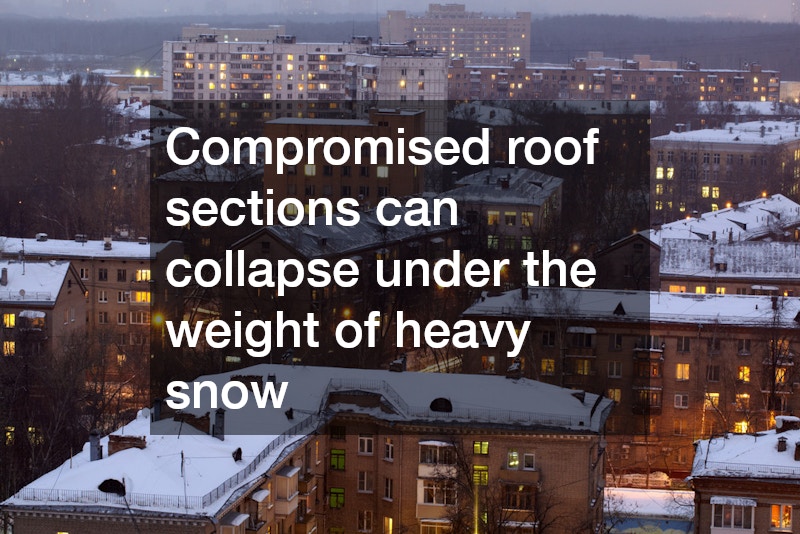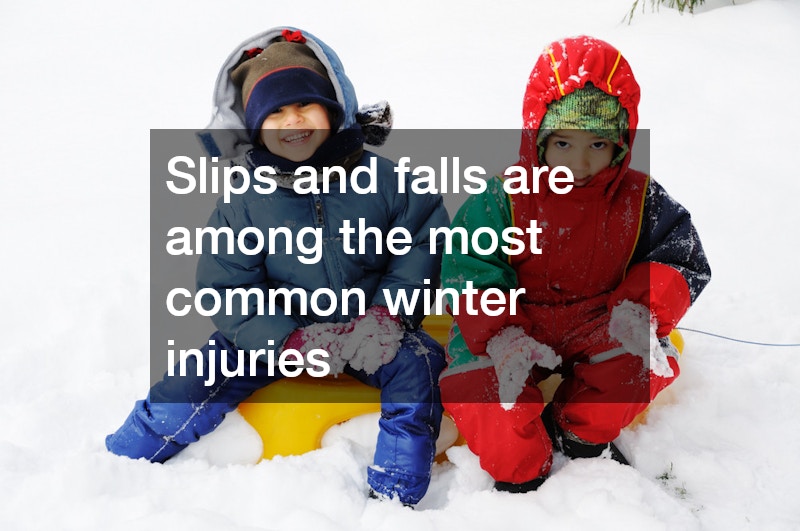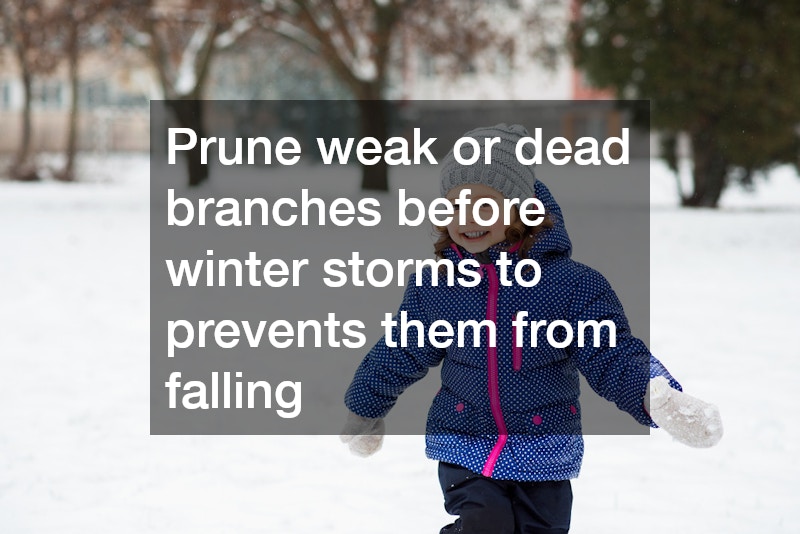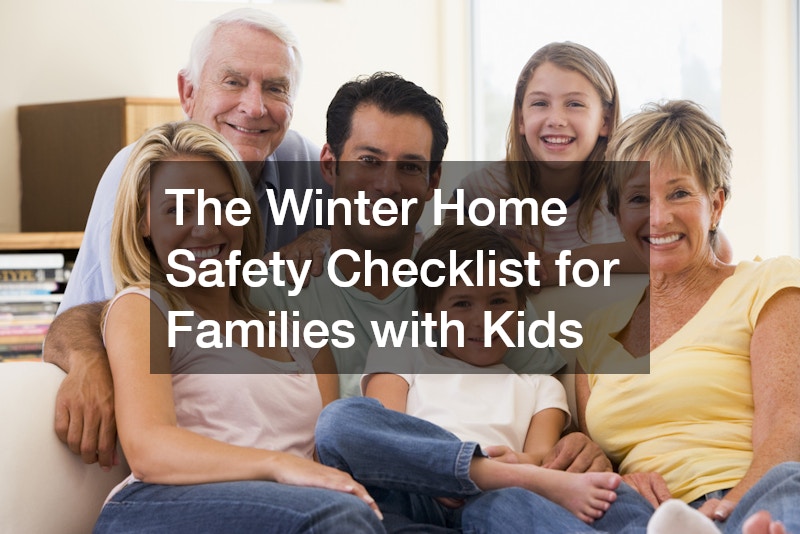Winter is a time of year that demands extra attention to your home’s maintenance and safety, especially when children are involved. From the risks of icy walkways to poor indoor air quality, cold weather introduces a unique set of challenges that can impact your family’s health and well-being. With a little preparation, you can address these issues head-on, creating a safe and warm environment for your loved ones. This comprehensive guide walks you through actionable steps to winterize your home, focusing on health, safety, and cost-effective solutions.
1. Inspect and Maintain Indoor Air Quality
During the winter, indoor air quality can decline rapidly due to closed windows, increased use of heating systems, and dust buildup in vents. Poor air quality can trigger allergies or asthma, especially in children, making it crucial to ensure your home’s air is clean and safe. Your HVAC system plays a central role in maintaining a healthy indoor environment, but without proper maintenance, it can circulate pollutants throughout your home. By taking a few proactive steps, you can significantly improve the air your family breathes all winter long.
- Hire an air duct cleaning and repair contractor: Over time, air ducts collect dust, mold, and allergens that can worsen indoor air quality. A professional cleaning service removes these contaminants, ensuring clean air circulates through your home. If your ducts have leaks or damage, repairing them improves your HVAC system’s efficiency and prevents warm air loss.
- Replace air filters monthly: HVAC filters trap particles like dust, pet dander, and pollen, but they need frequent replacement to remain effective. Use high-efficiency particulate air (HEPA) filters for the best results, and set reminders to change them every 30 days during peak winter use.
- Add portable air purifiers: Placing air purifiers in bedrooms or play areas provides an additional layer of protection. Look for models with HEPA filters and activated carbon to capture allergens and eliminate odors.
2. Secure Your Roof Before the First Snowfall
Winter weather can be extremely demanding on your roof, with snow, ice, freezing rain, and high winds testing its strength and resilience. A roof that isn’t properly maintained can lead to leaks, structural damage, or even dangerous collapses in extreme conditions. Heavy snow accumulation adds weight, while ice dams can trap moisture that seeps into your home. Preparing your roof for these challenges ensures your family stays safe and warm while also avoiding costly emergency repairs. Additionally, a well-maintained roof improves energy efficiency by preventing heat loss, which helps reduce your heating bills during the winter months.

1. Contact a Local Roofing Service for a Pre-Winter Inspection
A professional inspection is one of the most critical steps you can take to ensure your roof is ready for winter. A roofing expert will thoroughly examine your roof for issues that may not be visible from the ground.
- Loose or Missing Shingles: Shingles that are cracked, curled, or missing leave your roof vulnerable to water infiltration. Professionals will replace or secure them to ensure full coverage.
- Weak Spots or Structural Issues: An inspector will check for sagging areas or compromised sections that could collapse under the weight of heavy snow.
- Flashing and Sealant Check: Flashing around chimneys, vents, and skylights is a common area for leaks. An inspection will identify gaps or deteriorated sealant that needs repair.
Pro Tip: Schedule your inspection early in the fall to ensure you have ample time for repairs before the first snowfall.
2. Research Local Roofing Companies for Repairs
If the inspection reveals issues, hiring a reliable contractor is the next step. Finding the right roofing company ensures repairs are done correctly and withstand harsh winter conditions.
- Gather Multiple Quotes: Request detailed estimates from at least three companies to compare costs and services. Look for transparency in their pricing and scope of work.
- Check Reviews and References: Read online reviews and ask for references from past customers. Focus on companies with experience in winter-specific roofing repairs and a strong reputation for quality work.
- Inquire About Materials: Ask about the materials they plan to use. High-quality, weather-resistant materials like asphalt shingles with a high wind rating are crucial for winter durability.
Pro Tip: Some roofing companies offer discounts during the off-season or for bundled services like gutter cleaning and repairs. Ask about promotions to save on costs.
3. Clean Your Gutters and Downspouts
A functional gutter system is essential for protecting your roof during winter. When gutters and downspouts are clogged with leaves, twigs, and other debris, water cannot drain properly. This can lead to ice dams, which form when snow melts and refreezes at the edge of the roof, preventing proper water runoff.
- Remove Debris Regularly: Use a ladder, gloves, and a gutter scoop to clear out leaves and dirt from your gutters. Alternatively, hire a professional service to ensure thorough cleaning.
- Install Gutter Guards: Gutter guards can help prevent debris buildup and reduce the need for frequent cleaning.
- Ensure Proper Downspout Drainage: Make sure your downspouts direct water at least 3–4 feet away from your home’s foundation to prevent flooding or water pooling around the base of your home.
Pro Tip: After cleaning your gutters, check for signs of rust, sagging, or damage and repair them immediately to ensure they can handle the added weight of snow and ice.
4. Additional Winter-Ready Roof Maintenance Tips
- Trim Overhanging Branches: Overhanging tree branches can scrape your roof or fall during heavy snowfall, causing damage. Trim back any branches that could pose a risk.
- Check Insulation and Ventilation: Proper attic insulation and ventilation prevent heat from escaping and melting snow unevenly, which can lead to ice dam formation.
- Monitor Snow Accumulation: If snow builds up excessively, use a roof rake to safely remove it and reduce the weight on your roof. Avoid climbing onto the roof yourself in icy conditions.
Pro Tip: Keep an eye on your roof after storms. Early signs of damage, such as loose shingles or sagging, should be addressed immediately to prevent bigger problems.
By taking these steps to secure your roof before the first snowfall, you protect your home and your family from the many hazards winter weather can bring. Proactive maintenance saves money in the long run and ensures your home remains safe and warm throughout the season.
3. Ensure Water Systems Are Safe and Efficient
Winter poses significant challenges to your home’s water systems, from frozen pipes to contaminated drinking water. Frozen pipes can burst, causing extensive water damage, while poor water quality can affect your family’s health. Addressing these issues in advance ensures uninterrupted water access and minimizes risks during the coldest months.
- Use a drain cleaning service to clear blockages: Slow or clogged drains are especially vulnerable in winter when freezing temperatures can cause blockages to solidify. Professional drain cleaning prevents backups and ensures smooth water flow throughout your home.
- Install a residential water purification system: Clean, filtered water is essential for hydration and cooking, especially during flu season. Water purification systems remove contaminants like lead and bacteria, providing your family with safe, healthy water year-round.
- Insulate exposed pipes: Pipes in unheated areas like basements, garages, and crawl spaces are prone to freezing. Wrap them in foam insulation or use heating tape to prevent bursts. For extra protection, keep your home’s temperature above 55°F even when you’re away.
4. Create Safe Outdoor Play Areas
Winter offers a magical backdrop for children to enjoy outdoor activities, from building snowmen to sledding. However, icy conditions and slippery surfaces can turn fun into danger if your outdoor spaces aren’t properly prepared. Slips and falls are among the most common winter injuries, especially for children who are less likely to notice hazards. Cracked driveways, untreated decks, and icy walkways increase these risks. By taking proactive steps to maintain and improve these areas, you can create a safer environment for kids to play all winter long.

1. Repair Cracks with Asphalt Repair Products
Cracks in pathways and driveways might seem like minor issues during warmer months, but they can become significant hazards in winter. When water seeps into these cracks and freezes, it expands, worsening the damage and creating uneven surfaces. These irregularities can easily trip up running or playing children.
- Choose the Right Repair Product: Look for cold asphalt repair kits that work in freezing temperatures, as these are ideal for last-minute fixes before or during winter. These kits often come with easy application instructions and don’t require specialized tools.
- Prepare the Surface: Before applying the repair material, remove debris and loose particles from the cracks. Use a stiff broom or air blower to ensure the area is clean.
- Fill and Compact: Apply the asphalt repair product into the crack, ensuring it fills completely. Use a tamper or heavy tool to compact the material, creating a smooth and even surface.
Pro Tip: Address cracks early in the fall to prevent them from worsening during the freeze-thaw cycles of winter.
2. Apply a Deck Waterproofing Membrane
Decks are a favorite outdoor spot for kids to play or gather, but in winter, they can turn into slippery and unsafe surfaces. Wood decks, in particular, absorb moisture, which can freeze into a thin layer of ice. A waterproofing membrane protects the deck surface from water infiltration and reduces the formation of ice.
- Clean the Deck Thoroughly: Before applying the membrane, ensure the deck is free of dirt, moss, or algae, as these can reduce the effectiveness of the waterproofing layer. Use a pressure washer or deck cleaner for deep cleaning.
- Apply a Waterproof Sealant or Membrane: Use a high-quality deck waterproofing membrane designed to withstand harsh winter conditions. Roll or spray it onto the surface following the manufacturer’s instructions, ensuring even coverage.
- Inspect for Structural Weaknesses: While applying the membrane, check for loose or rotting boards. Replace these immediately to prevent injuries.
Pro Tip: Reapply the waterproofing layer every two years to maintain its effectiveness.
3. Use Sand or Ice Melt Regularly
Ice and snow can accumulate quickly on walkways, driveways, and other high-traffic areas, making them treacherous for both kids and adults. Proper de-icing is essential to prevent slips and falls.
- Apply Sand for Traction: Spread sand liberally over icy surfaces to improve traction. This is especially useful for steep driveways or walkways where children are likely to run or play. Sand is an affordable and eco-friendly option.
- Choose Eco-Friendly Ice Melt: Use ice melt products specifically designed to be safe for pets, children, and vegetation. These products prevent ice from forming while minimizing environmental harm.
- Apply Ice Melt Early: For best results, apply ice melt before snow or freezing rain begins. This pre-treatment helps prevent the ice from bonding to the surface, making it easier to clear later.
Pro Tip: Keep a bucket of sand or ice melt near entry points for easy access during sudden icy conditions.
4. Additional Tips for a Safe Outdoor Space
- Install Outdoor Lighting: Winter days are short, and poor visibility increases the risk of accidents. Add motion-sensor or solar-powered lights to pathways, driveways, and play areas.
- Clear Snow Immediately: Use a snow shovel or blower to remove snow from walkways and driveways as soon as possible. Pack snow on play areas to create safer, more even surfaces for children.
- Monitor Outdoor Play Areas: Regularly inspect playsets, swings, or trampolines for ice buildup or structural weakness caused by snow weight. Ensure these areas remain safe for use.
By taking these precautions, you can transform potentially hazardous outdoor spaces into safe areas where your children can enjoy the winter season to the fullest. Whether they’re sledding in the yard or simply walking to the car, these measures reduce risks and allow you to focus on making winter fun and memorable for your family.
5. Deep Clean High-Traffic Indoor Areas
With kids spending more time indoors during winter, your home’s cleanliness becomes even more important. Carpets, rugs, and soft furnishings can harbor allergens, dust, and bacteria, affecting your family’s health. Deep cleaning these areas creates a safer, more comfortable environment for your children.
- Schedule professional carpet cleaning services: Over time, carpets accumulate dirt, pet dander, and other particles that regular vacuuming can’t remove. A deep clean rejuvenates your carpets, leaving them fresher and safer for crawling toddlers or playtime.
- Vacuum regularly with a HEPA filter vacuum: In between professional cleanings, vacuum high-traffic areas at least twice a week to maintain cleanliness. HEPA filters capture even the smallest particles, keeping your home’s air fresh.
- Wash curtains and upholstery: Soft furnishings also collect dust and allergens. Machine-wash curtains, cushion covers, and throws, or use a steam cleaner for items that can’t be washed.
6. Organize and Childproof Storage Spaces
Winter often comes with a surge of seasonal items—coats, boots, hats, gloves, and holiday decorations—that can quickly overwhelm your home if not stored properly. Without a clear system for organization, these items can create cluttered and chaotic spaces, increasing the risk of tripping or accidents, especially for young children. Proper storage isn’t just about maintaining order; it’s also about ensuring these items are safely tucked away to avoid access to hazardous materials like cleaning supplies or tools. By organizing and childproofing your storage spaces, you can create a more functional and safer home environment for your family.
1. Install Custom Cabinetry for Winter Essentials
Custom cabinetry is a practical solution for managing the influx of winter gear and keeping frequently used items accessible. Tailoring your storage to your family’s needs not only saves space but also ensures safety for young children.
- Choose Adjustable Shelving: Custom cabinets with adjustable shelves allow you to adapt the storage space to different sizes of items, from bulky scarves to smaller gloves or hats. This flexibility ensures that everything has its place, reducing clutter.
- Incorporate Child-Safe Locks: Cabinets that store cleaning supplies, sharp tools, or other hazardous materials should be equipped with child-safe locks. These locks prevent curious children from accessing dangerous items.
- Add Hooks and Racks Inside Cabinets: Hooks or small racks inside cabinet doors are perfect for hanging small items like keys, masks, or reusable shopping bags, freeing up shelf space.
Pro Tip: Place frequently used items like boots and coats at a lower height in the cabinet for easy access, while storing less-used items, like extra blankets or seasonal décor, higher up.
2. Declutter and Donate Unused Items
The winter season is the perfect time to reevaluate your belongings and reduce clutter. Overcrowded storage spaces can make it difficult to find what you need, increasing frustration and the risk of accidental falls or spills.
- Sort Items into Categories: Group similar items together—coats, hats, holiday decorations, etc.—to get a clear view of what you have. This makes it easier to decide what to keep, donate, or discard.
- Adopt a “One In, One Out” Rule: For every new item you bring into the home (such as a new winter jacket), donate or recycle an old one. This prevents storage spaces from becoming overcrowded.
- Donate Gently Used Items: Take advantage of donation drives during the holiday season to give unused winter clothing, blankets, or toys a second life. Not only does this free up space, but it also helps others in need.
Pro Tip: Schedule decluttering sessions regularly—seasonally or annually—to keep storage spaces manageable and prevent the buildup of unnecessary items.
3. Label Storage Bins for Easy Access
Clear labeling is a simple yet effective way to maintain order and ensure everyone in the household knows where to find and store items. It minimizes the likelihood of children rummaging through cabinets and creating a mess.
- Use Large, Easy-to-Read Labels: Opt for large text or even pictograms for younger children who can’t read yet. For example, a picture of a mitten on a bin for gloves.
- Color-Code Containers: Assign different colors to bins for each family member or type of item. For instance, blue bins for dad’s winter gear, pink bins for holiday decorations, and yellow bins for tools.
- Transparent Bins for Visibility: Use clear bins for items that are used frequently, like kids’ snow gear, so you can quickly identify the contents without having to open multiple containers.
Pro Tip: Keep storage bins for everyday items like hats and gloves near the entryway or mudroom for easy grab-and-go access.
4. Additional Childproofing Tips for Storage Spaces
In addition to organization, childproofing storage areas is essential for keeping curious little hands away from dangerous or delicate items.
- Anchor Tall Cabinets and Shelves: Tall furniture like shelving units or cabinets should be secured to the wall with anchors or brackets to prevent tipping if climbed.
- Use Soft-Close Hinges: Cabinets and drawers with soft-close hinges prevent slamming, which can protect little fingers from getting pinched.
- Store Heavy Items on Lower Shelves: Place heavier items like boots or storage bins on lower shelves to reduce the risk of injury if they fall.
Pro Tip: Periodically check locks, hinges, and wall anchors to ensure they remain secure and functional.
7. Maintain Trees and Landscaping for Safety
Winter storms can turn trees into safety hazards, with falling branches posing risks to your home and family. Regular tree maintenance reduces these risks and ensures your landscaping survives the season intact.

- Hire a tree arborist for an inspection: A professional arborist can assess your trees’ health, looking for signs of disease or decay. Pruning weak or dead branches before winter storms hit prevents them from falling.
- Remove hazardous trees near your home: Trees that lean too close to your house or have extensive damage should be removed to avoid accidents during heavy snow or ice storms.
- Trim branches overhanging roofs or walkways: Overhanging branches can scrape your roof or drop ice onto walkways, creating additional hazards. Trimming them back minimizes these risks.
8. Prevent Plumbing Emergencies
Frozen pipes and plumbing issues are common in winter, but they’re also preventable with the right precautions. Taking care of your plumbing before the first freeze saves you from expensive repairs and water damage.
- Schedule a drain cleaning service: Clear your drains to avoid clogs that could freeze and burst pipes. Professionals can also identify underlying issues that need repair.
- Shut off outdoor faucets: Disconnect garden hoses and shut off water to outdoor spigots. Drain any remaining water and install frost-proof covers to protect the faucets.
- Monitor water pressure: A sudden drop in pressure could indicate a frozen pipe. If this happens, shut off your water supply and call a plumber immediately to prevent further damage.
9. Protect Your Home’s Exterior from Winter Damage
Your home’s exterior faces harsh conditions during winter, from freezing temperatures to heavy snowfall. Protecting these surfaces prevents costly damage and ensures your home remains safe and functional throughout the season.
- Fix cracks with asphalt repair products: Address small cracks in your driveway or pathways before winter. Freezing and thawing cycles can cause these cracks to expand, leading to more extensive damage.
- Apply a deck waterproofing membrane: Protecting your deck from moisture reduces warping, rot, and ice accumulation. A membrane creates a barrier that extends the life of your deck.
- Inspect siding and seal gaps: Check for cracks or gaps in your home’s siding and caulking. Sealing these areas prevents heat loss and keeps cold air out.
10. Budget-Friendly Tips for Winter Home Maintenance
Winter maintenance doesn’t have to drain your wallet. With strategic planning and prioritization, you can keep your home safe and comfortable while staying within your budget.
- Compare quotes from local roofing companies: Many companies offer discounts for early bookings or bundled services. Shop around to find the best deals without sacrificing quality.
- Look for off-season discounts on services: Carpet cleaning services and air duct cleaning contractors often run promotions during their slower months. Booking these services early can save you money.
- DIY small repairs: Tasks like sealing window gaps or insulating pipes can often be done with affordable materials from your local hardware store.
Conclusion
Winter is a season of joy and togetherness, but it also brings unique challenges that require preparation. By following this checklist, you can ensure your home is safe, healthy, and ready for the colder months. From securing your roof to improving indoor air quality and creating safe play spaces for your kids, each step contributes to a more comfortable winter for your family. Take action now, and enjoy peace of mind knowing your home is winter-ready.



